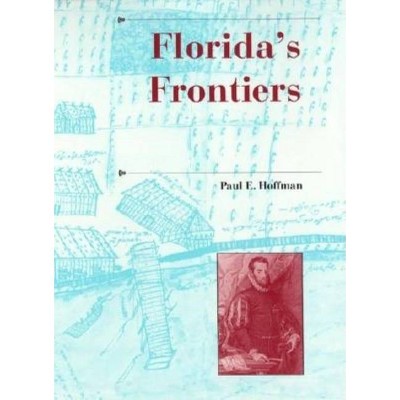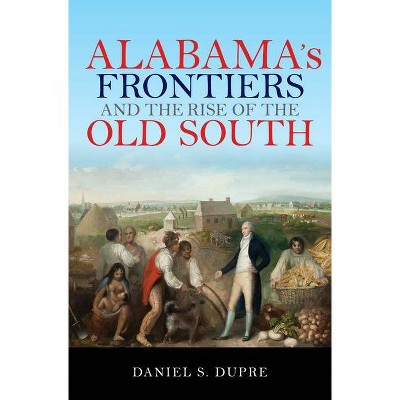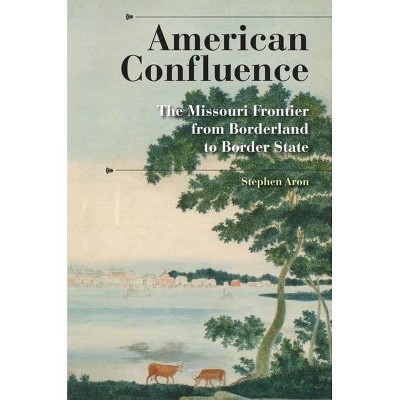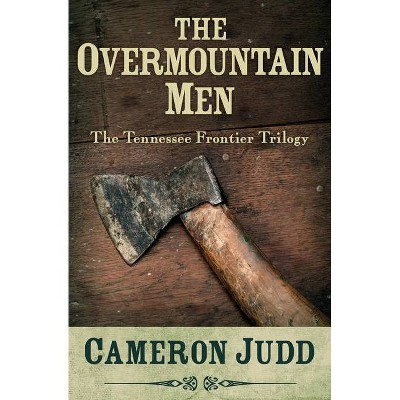Tennessee Frontiers - (History of the Trans-Appalachian Frontier) by John R Finger (Hardcover)

Similar Products
Products of same category from the store
AllProduct info
<p/><br></br><p><b> About the Book </b></p></br></br>They remind us that this is the story of real people who dealt with real problems and possibilities in often difficult circumstances.<p/><br></br><p><b> Book Synopsis </b></p></br></br><p>This chronicle of the formation of Tennessee from indigenous settlements to the closing of the frontier in 1840 begins with an account of the prehistoric frontiers and a millennia-long habitation by Native Americans. The rest of the book deals with Tennessee's historic period beginning with the incursion of Hernando de Soto's Spanish army in 1540. John R. Finger follows two narratives of the creation and closing of the frontier. The first starts with the early interaction of Native Americans and Euro-Americans and ends when the latter effectively gained the upper hand. The last land cession by the Cherokees and the resulting movement of the tribal majority westward along the Trail of Tears was the final, decisive event of this story. The second describes the period of Euro-American development that lasts until the emergence of a market economy. Though from the very first Anglo-Americans participated in a worldwide fur and deerskin trade, and farmers and town dwellers were linked with markets in distant cities, during this period most farmers moved beyond subsistence production and became dependent on regional, national, or international markets.<br/> <br/>Two major themes emerge from Tennessee Frontiers: first, that of opportunity the belief held by frontier people that North America offered unique opportunities for advancement; and second, that of tension between local autonomy and central authority, which was marked by the resistance of frontier people to outside controls, and between and among groups of whites and Indians. Distinctions of class and gender separated frontier elites from lesser whites, and the struggle for control divided the elites themselves. Similarly, native society was riddled by factional disputes over the proper course of action regarding relations with other tribes or with whites. Though the Indians lost in fundamental ways, they proved resilient, adopting a variety of strategies that delayed those losses and enabled them to retain, in modified form, their own identity.</p><p>Along the way, the author introduces the famous personalities of Tennessee's frontier history: Attakullakulla, Nancy Ward, Daniel Boone, John Sevier, Davy Crockett, Andrew Jackson, and John Ross, among others. They remind us that this is the story of real people who dealt with real problems and possibilities in often difficult circumstances.</p><p/><br></br><p><b> Review Quotes </b></p></br></br><br><p>Finger (Univ. of Tennessee-Knoxville) draws on his rich research into the Southern frontier to illuminate not only Tennessee's three physiographic zones but also their spheres of interaction. Inhabited by Native peoples for some ten thousand years, Tennessee was touched by the 16th-century Desoto entrada; became a cockpit of war during the imperial struggles among French, English, and Spanish for hegemony in North America; and was born in the fires of the American Revolution. The author skillfully summarizes and illustrates the complexity of Tennessee's frontier history, addressing issues of leadership (Jackson versus all rivals), land speculation (ever dominant), and Indian affairs (where he is at his best). Although a frontier until 1840, Tennessee was part of a global economic and diplomatic network from its earliest days. Like the late Stanley Folmsbee, Finger knows the three Tennessees, linguistically, geographically, politically, socially, and economically; fortunately for the reader, he has constructed a well-balanced account of them all. Maps, charts, illustrations, and 48 pages of sources enhance the volume's usefulness for collections on the American frontier. All levels and collections.</p>--J. H. O'Donnell III, Marietta College, 2002jul CHOICE.<br><p/><br></br><p><b> About the Author </b></p></br></br><p>John R. Finger is Professor of History at the University of Tennessee--Knoxville.</p>
Price History
Price Archive shows prices from various stores, lets you see history and find the cheapest. There is no actual sale on the website. For all support, inquiry and suggestion messagescommunication@pricearchive.us



















